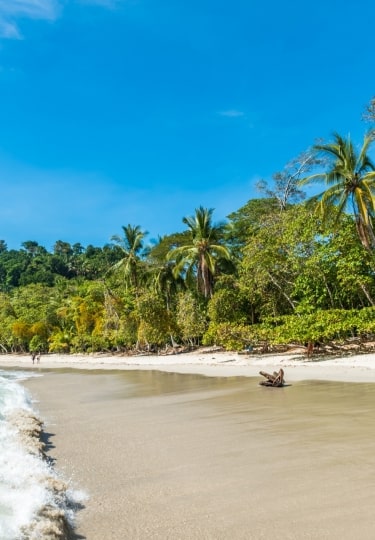The best time to visit Costa Rica, in general, is the dry season, mid-December through April. May through June, part of the shoulder season, is also a good time to visit.
Be aware that the Pacific and the Caribbean coasts have slightly different wet and dry seasons. On the Caribbean side, February and March are the driest months and the second dry period occurs in September and October, conversely, among the rainiest periods on the Pacific Coast.
Costa Rica’s microclimates, with their biodiversity, are part of what makes the country so fascinating. The lush tropical rainforests, cool cloud forests, sunny Pacific and Caribbean beaches, volcanoes, and mountains exhibit different weather patterns, temperatures, and wildlife.
Visiting Costa Rica By Season
Summer
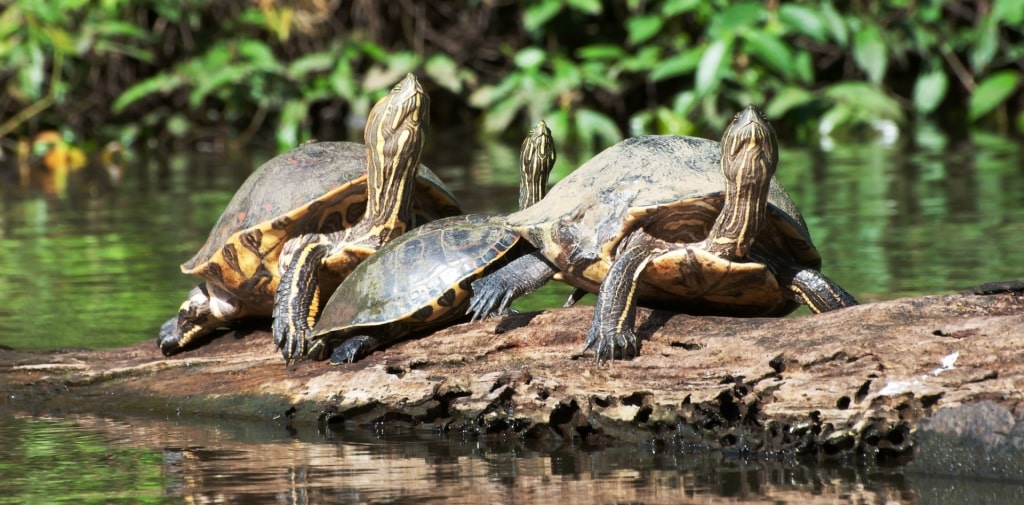
Tortuguero National Park
In Limon on the Caribbean coast, temperatures average 81℉ (27℃), with highs reaching 86℉ (30℃) in June, July, and August. In July and August, green sea turtles come ashore in Tortuguero National Park to nest.
Rainfall in June and July in Limon hovers around seven inches (178mm), and decreases to 6.5 inches (165mm) in August.
In Puntarenas on the Pacific coast, temperatures average about 83℉ (28℃), with highs reaching 91℉ (33℃) in June, July, and August. Rainfall averages around four inches (102mm) in the summer. Look for whales breaching the water in Papagayo Bay on the north Pacific coast in July and August.
Fall
In Limon, in September, October, and November, the average temperature is 80℉ (27℃) with highs of 86℉ (30℃). In Puntarenas, average temperatures hover around a slightly warmer 83℉ (28℃), reaching highs of 90℉ (32℃).
In Limon, rains increase from six inches (152mm) in September to about 15 inches (381mm) in November). Puntarenas receives about 6.5 inches (165mm) of rain in September and October, with precipitation decreasing to just three inches (76mm) in November.
Fall is one of the best times to spot whales, turtles, and raptors in Costa Rica. The whales continue to pass through Papagayo Bay in September and appear offshore in Manuel Antonio National Park through September and October.
To experience more of Costa Rica’s nature, be sure to bring binoculars to spot the turkey vultures, hawks, osprey, peregrine falcons, and other raptors that ride the thermals south through the country.
Read: Best Beaches to Visit in November
Winter
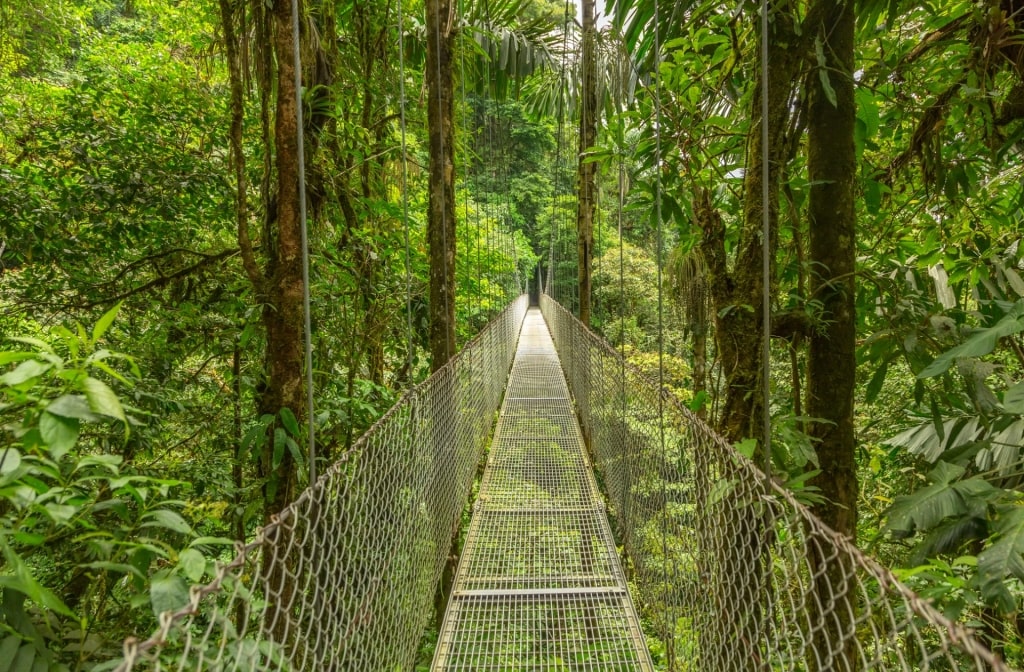
Monteverde Cloud Forest Reserve
The heart of Costa Rica’s dry season occurs from mid-December through February. Those months are especially good times to visit Monteverde Cloud Forest Reserve, a protected area of more than 35,000 acres.
Costa Rica’s national flower, guaria morada, a lush purple orchid, blooms in January and February.
In winter in Limon, the average temperature is 80℉ (27℃) with highs of 86℉ (30℃). In Limon, rainfall drops right down to an average of 1.8 inches ( 46mm) in February. Although temperatures in Puntarenas are hot, averaging 85℉ (29℃), in December through February, rainfall is negligible.
The bright sunny days coupled with little rainfall make winter the best time to go to Costa Rica if you’re looking for beach life and rainforest hiking.
Spring
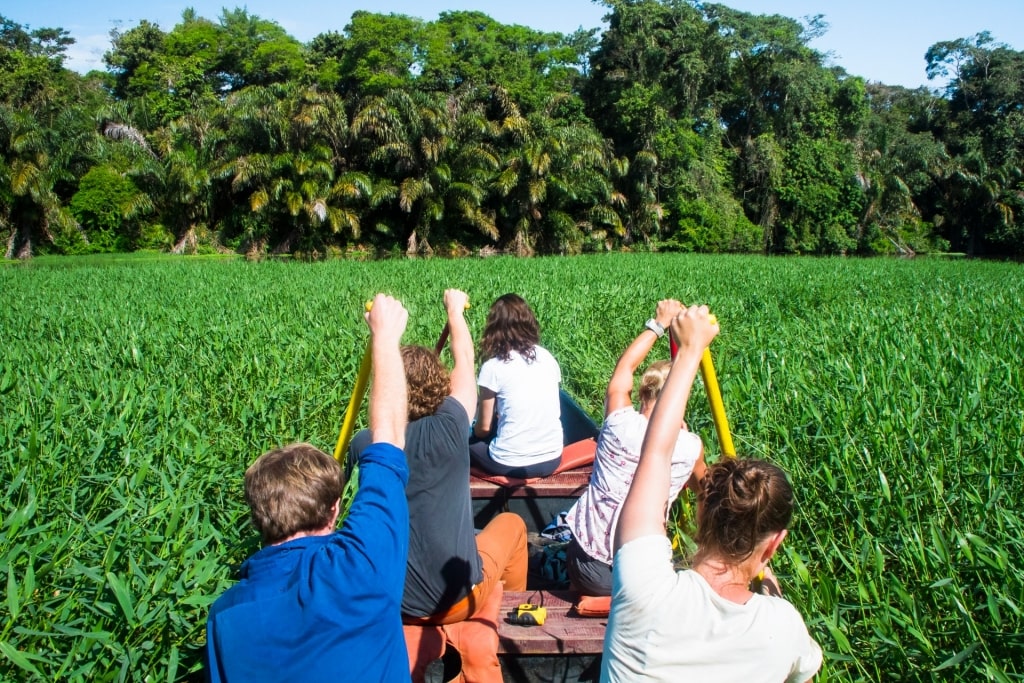
Kayaking in Tortuguero National Park
Spring is one of the best times to enjoy rafting, kayaking, and exploring Costa Rica’s rainforests.
Limon’s average temperature is 81℉ (27 ℃), although rainfall increases from March’s low of 1.3 inches (33mm) to an average of six inches (152mm) in May.
Spring temperatures in Puntarenas average of 87℉ (31 ℃). Puntarenas is much drier; even humid May only brings 3.9 inches (99mm) of rain.
When Is Rainy Season?
In general, the rainy season, known as the wet or green season, runs from mid-May through November. October and November receive the most rainfall. In these months, expect rain in the afternoon and early evening.
On the Pacific side, the rainy season extends from May through October, with rains decreasing in July and August and increasing in September and October, the rainiest months on the Pacific coast.
On the Caribbean side, the rainiest months tend to be November and December as well as May, June, and July. The Caribbean coast’s northern section, which includes Tortuguero, receives more rain than the southern Caribbean, which includes Limon.
When Is High Season?
Costa Rica’s high season corresponds with its dry season, mid-December through April on the Pacific coast. The Caribbean has two dry periods. February and March are the driest months and the second dry period occurs in September and October.
The Christmas season is especially busy as this is when Ticos (as locals are called) head for the beaches on both coasts.
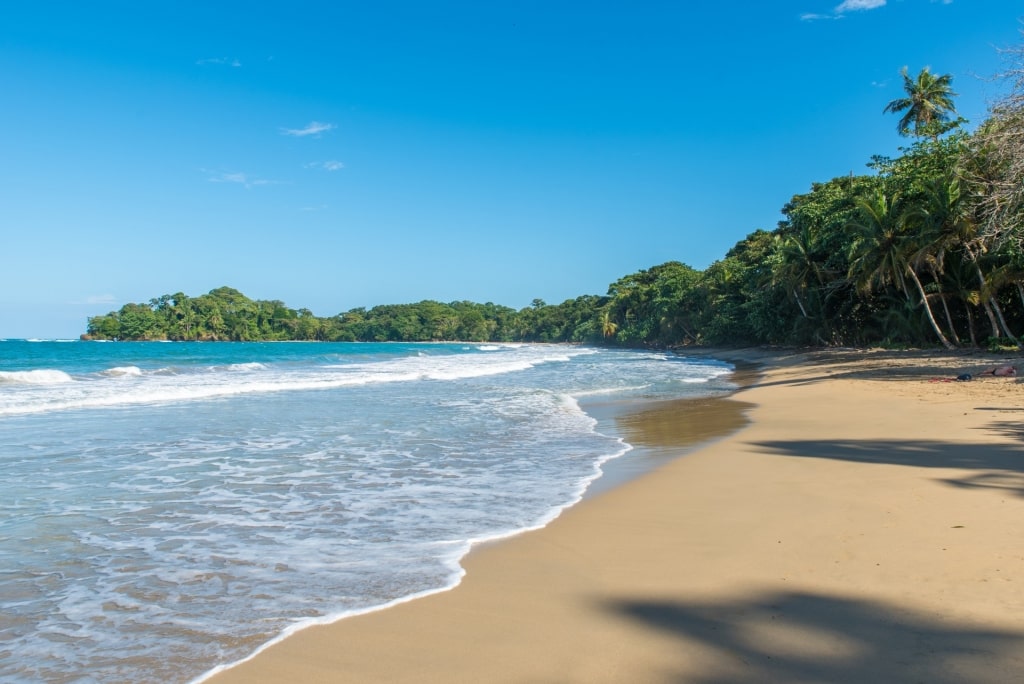
Punta Uva Beach
When Is Shoulder Season?
Shoulder season occurs from mid-May through August, when Costa Rica is generally sunny. It’s rare to get extended periods of rain and even if there is a wet spell, it will still be warm.
The humidity can be intense from May onward, though, so take advantage of long swims in the sea.
When Is Low Season?
Low season, September through November, corresponds to Costa Rica’s rainiest months. While some enjoy the sense of space that this period brings, with far fewer visitors, there is a good chance that you’ll get wet, especially in the mountains. A bonus is that river rapids are strong and waterfalls abundant during this season.
Daylight hours remain much the same year-round, as Costa Rica is so close to the equator.
Read: Costa Rica Travel Tips
Excited to visit Costa Rica? Browse Celebrity’s cruises to Costa Rica and book your escape.
